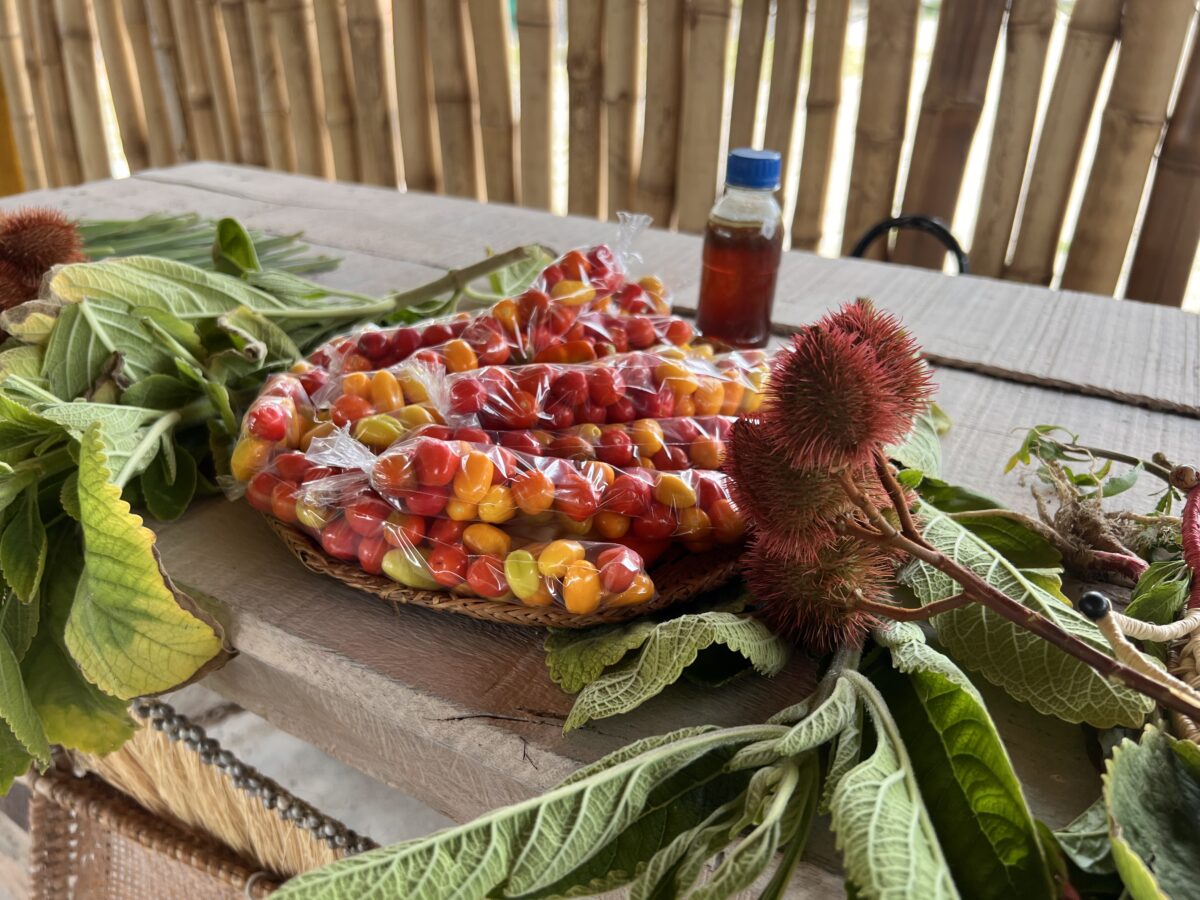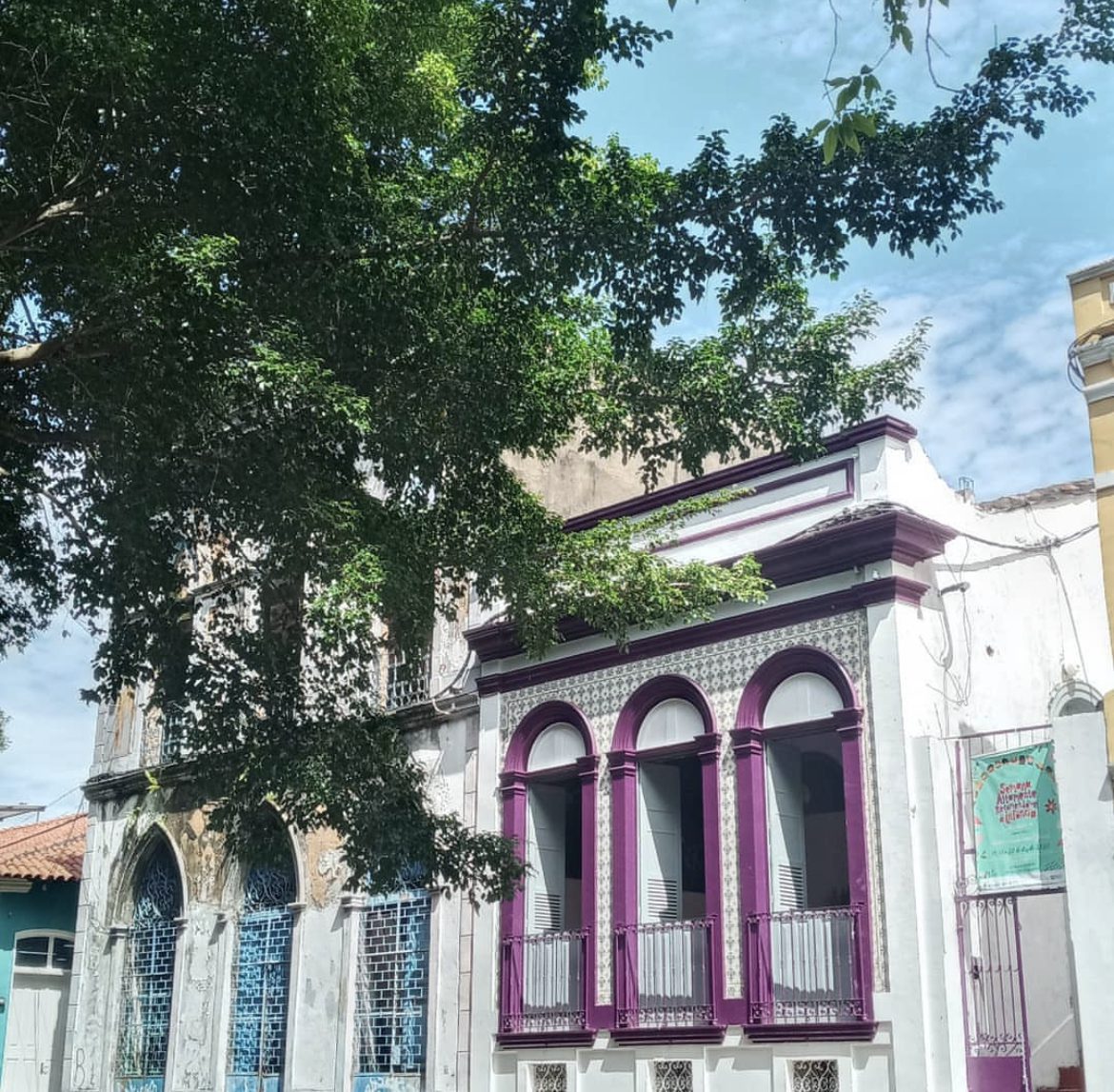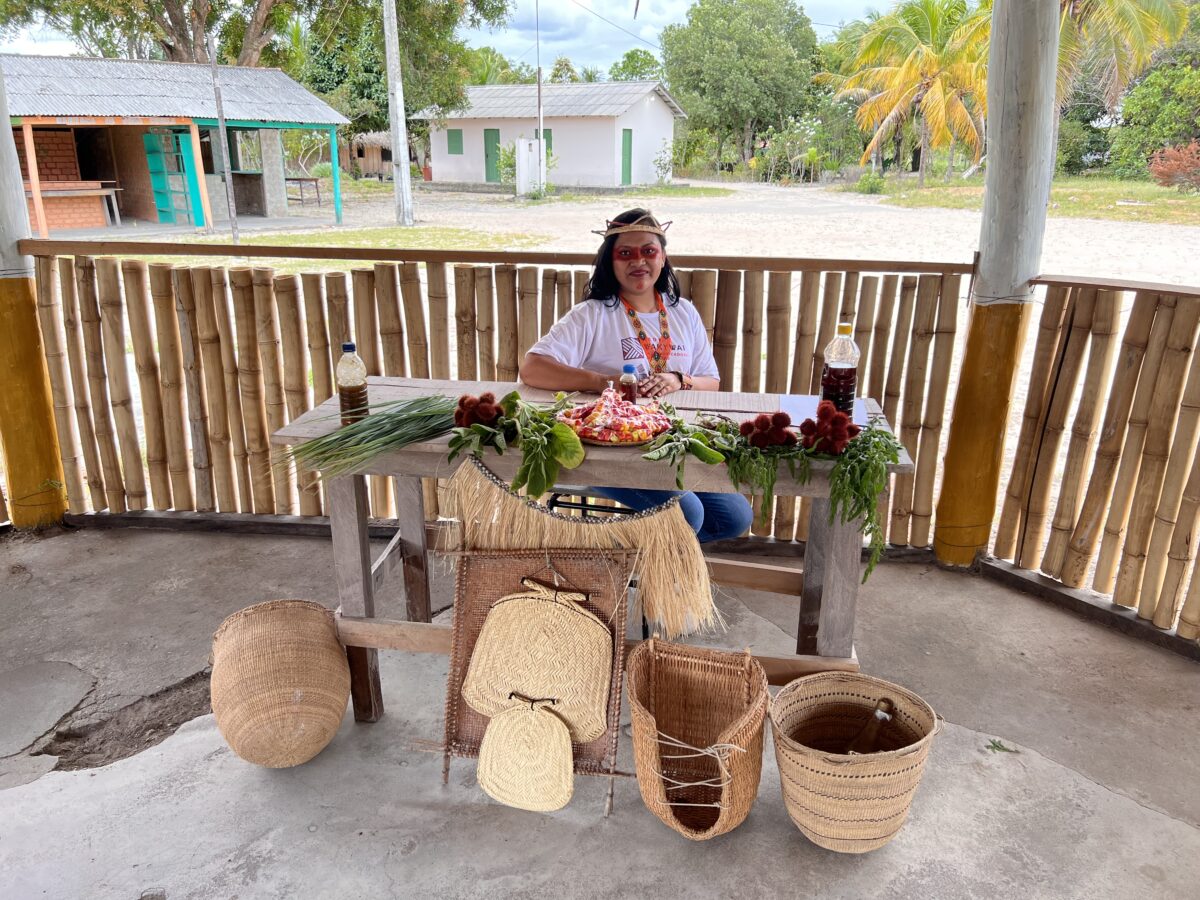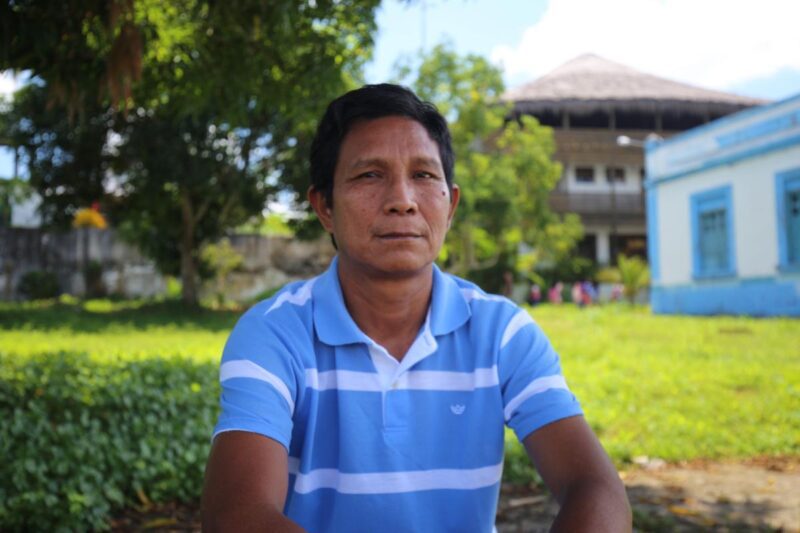By: Bryan Araújo, Internews Media Mentor in Brazil for the Rooted in Trust Project, with editorial support from the Internews Health Journalism Network.
Indigenous health workers in the Amazonas state of Brazil are known as Pajés or Kumuã. They often travel up to ten days by boat to reach Manaus, the capital of the Amazonas state. João Paulo Tukano is a Kumuã and the founder of the first Amazonian Indigenous Medicine Center, known as Basherikowi, and located in the state capital.
“We travel this far because we are recognized by the community and are committed to serving our people,” says Tukano. “We are trained for this type of work and come from a line of health workers in the Amazonas region. We see patients daily for one month.”
João Paulo and his colleagues are from the Tukano, Tuyuka and Desano indigenous ethnic groups, and come from one of the 750 communities spread across the municipality of São Gabriel da Cachoeira, in the northeastern region of Brazil.
São Gabriel da Cachoeira, the capital city of the municipality, has the highest percentage of Indigenous people in all of Brazil and is only accessible by plane or boat. With only one hospital, and the nearest Intensive Care Unit more than 850 km (530 miles) away, São Gabriel da Cachoeira represents the “last mile” in the delivery of health services.
Pajés and Kumuã like João Paulo Tukano are the stewards of Indigenous ancestral knowledge. They work closely with Indigenous health communicators who are trained and supported by the USAID- funded Internews Rooted in Trust project. This global pandemic information response program aims to counter the spread of misinformation related to COVID-19 by working directly with trusted information and care providers.
In Brazil, Indigenous health workers are often the only providers of care in geographically marginalized communities. Equipping them with accurate health information, while respecting their role as traditional healers is fundamental to improving and saving lives.
Overcoming Discrimination
Tukano founded the Center for Indigenous Medicine in 2017, alongside his father, uncles, and nephew. The inspiration came from an episode involving doctors at a hospital in Manaus in 2009, after Tukano’s niece was bitten by a snake.
“We proposed to the medical team the possibility of a joint treatment with indigenous medicine,” Tukano explains. “I initially thought this was our right, since the natives by law, have a right to a treatment integrated with traditional medicines. This was the onset of a real struggle because the medical team did not want to accept our proposal. We had to fight for three months to be able to have the right to a treatment articulated in conjunction with indigenous medicine,” recalls Tukano.
Fortunately, Tukuna’s niece was saved, but the discrimination they felt, coupled with the stigma towards their native culture, and the lack of understanding about indigenous medicine, were the driving force behind the creation of the Center years later.
Basherikowi, in the indigenous Tukano language, translates into, “house where health care, protection, and healing are provided.”
“The doctor said he wasn’t going to allow my father, the Pajé, to enter because the hospital is a place of silence and he wouldn’t allow him to do a healing ritual,” says Tukano.

“We realized that in society’s mind when we talk about indigenous medicine, people imagine a person with a headdress and ornaments performing rituals on a body. This is a misconception that results from historical misrepresentation. One of the reasons behind the creation of the Center was precisely to show that indigenous medicine is another way of treating diseases. This encouraged me to go deeper into research, and eventually we established the Center.”
A Health Center that Integrates Indigenous Knowledge
In almost five years of operation, the Center has treated around 10,200 people with three indigenous health workers from the Brazilian Amazon who take turns at the center. Tukano says that indigenous health workers have years of training in the forest and have deep ancestral knowledge about medicinal plants, healing practices. This precious know-how is passed down from one generation to the next.

“Indigenous health workers have a very clear conception about the body, about diseases and symptoms. They have their own protocols for health and healing,” says Tukano. “They can operate anywhere in the world. Indigenous medicine is another health care model, neither better, nor worse than Western medicine.”
Oral communication with patients is central to the healing process administered by the Center’s health specialists.
“We are people of orality. For us the word is not abstract. It is concrete. It is with words that we build, destroy, and relate to one another. I like to say that the word in my father’s mouth is like a scalpel in a doctor’s hand,” adds Turkano.
Integrating Indigenous Medicine into Western Medicine
One of the main challenges for indigenous health specialists, according to Tukano, is the lack of public health policies that encourage the integration of indigenous medicine into biomedicine: from professional training to the recognition of practices performed by indigenous people in their own communities.
“This integration is fundamental, because our medicine remains invisible to the outside world. We need to change this. We must learn to appreciate this approach to medicine by acknowledging the work of the health specialists in our communities, and to invest in their knowledge about health,” emphasizes Tukano.

He says it is a mistake to think of indigenous medicine as an “alternative,” since in the Amazon communities this is the main form of treatment for people. For him, the dialogue between Western and Indigenous medicine is essential, not only for Indigenous peoples, but for the betterment of humanity.
“I’m not saying that we don’t want biomedicine” says Tukano. “I think both are needed to improve people’s quality of life. The bottom line is that we need to be in an ongoing conversation.”
Over the past 12 months, the USAID-funded Internews Rooted in Trust project brought together Indigenous traditional medicine and Western medicine workers in virtual roundtable discussions. With the goal of understanding the pandemic response in the Indigenous communities, these conversations focused on how these two distinct medical approaches can be leveraged together to address the health needs of people living in remote regions of the Brazilian Amazon without access to health facilities.
Available on YouTube, these discussions provide valuable insight into the role played by traditional Indigenous medicine in the healing of people living in the Amazon region.
